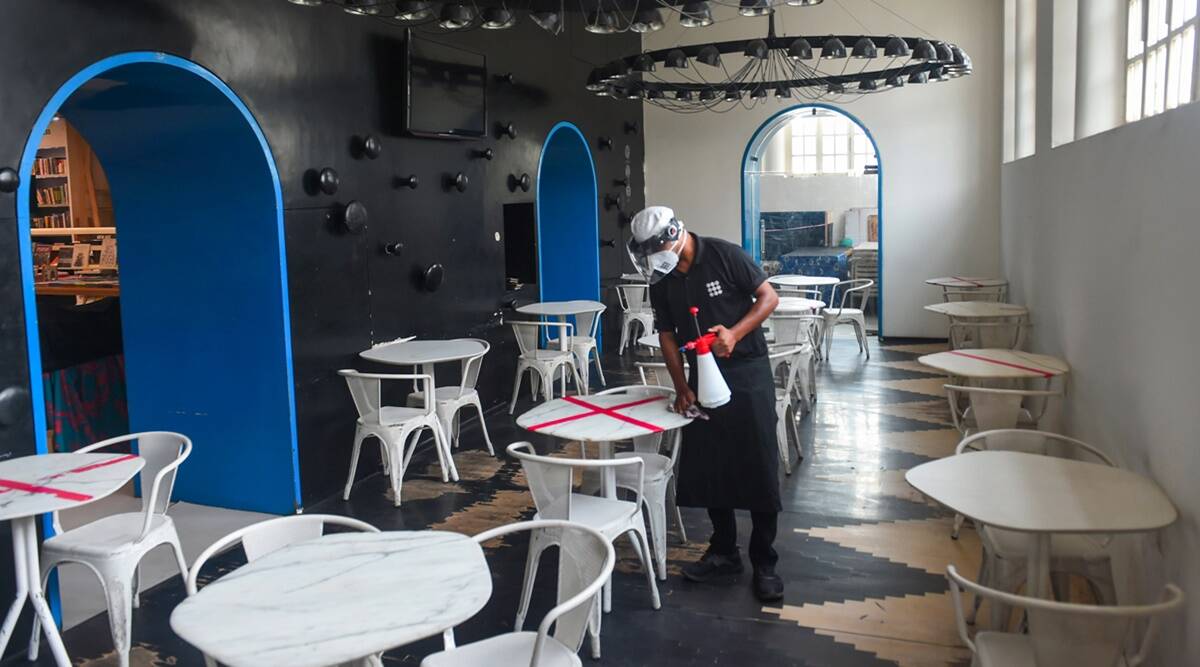As the hospitality industry re-opens after the Covid second wave, a look at how ‘becoming digital’ could help it thrive.
Written by Sameer Seth
Recently, we joyfully revisited a television show that captured our collective imaginations almost two decades ago. The reason why Friends hooked so many of us was because of the version of life it created – a version we all wanted. For me, the scenes in Central Perk always stood out. To be surrounded by friends, drinking endless cups of coffee, and laughing raucously seemed magical.
For many, our fondest memories are intimately connected to, and created in, our favourite eateries. These restaurants existed to indulge and entertain us.
More importantly, they gave us a sense of community. How good it feels to enter your neighbourhood spot, where everyone from the host to the chef knows you and just how you like your drink. For me, gin and soda with a splash of tonic and lime, thank you.
For many of us, creating this sense of community was the reason for entering the restaurant business. The last 15 months, however, have pulled the proverbial rug out from beneath our feet. We struggled to keep the lights on. Even though it hurts to admit it, the return of restaurants as we knew and loved them is still a while away. When restaurants re-emerge, the playing field will be dramatically different, forever altered by the pandemic.
The question: How do we not just survive in this new world, but also truly begin to thrive again?
The answer: Revisit why we love going to restaurants and understand how to recreate that sense of community when the entire dining experience is happening outside the restaurant.
How do we do this?
We “become digital.”
“Becoming digital” began with the dire need to survive. When the pandemic began, we had to get the food and the restaurant experience to people’s doorsteps.
From delivery and meal kits to online classes and food products, we tried — and continue to try — everything possible. What does “being digital” mean if we want to thrive, and not just survive? This is where bringing back a sense of community could be the je ne sais quoi we need to push beyond survival.
Once upon a time, restaurants were in complete control and accountable for their guests’ experience. Guests called, visited, dined, paid, and, hopefully, remembered their experience. Social media, apps, delivery services, payment providers, etc. have altered the industry. Now, every interaction — exploring, dining, ordering, delivery — involves multiple service providers. Each of them comes with their objectives, priorities and systems. In this new structure, we must ask ourselves — who owns the relationship with the guest? And who is building the sense of community?
We have traded the joy and responsibility of delivering a complete experience in exchange for access, data, convenience and efficiency. We need to learn to use technology to deepen our relationships with our guests, rather than dilute it. In an increasingly fragmented ecosystem, we can “be digital” to deliver personalised, effortless and trusted experiences — rather than just focusing on convenience.
As an industry, we are incredibly inventive, and technology could boost innovation further. While each brand will execute this differently, we must begin with a collective shift in mindset about technology, one that enables us to do what we do best, not replace what we do.
As we design for the future, we must remember two things. First, people aren’t just “customer IDs” to whom food must be dispatched quickly. We need to move beyond the transaction, and once again rekindle a dialogue with guests to recreate that sense of community. Through a series of experiments, we have found ways of doing just that.
For instance, we have used online channels to invite guests to test our new menus. These guests went on to become our ambassadors in their neighbourhoods. This created a dialogue and a meaningful feedback loop. They now come back with ideas on how to use technology to interact with them in ways that even we never would have imagined. In order to create this relationship (even though digital), we need to go beyond taking orders. We need to stop thinking with a logistics mentality and think like restaurants again.
Furthermore, what we do best is to serve and care for those who walk through our doors (even as the doors are replaced by the phone). Technology can be used to scale our ability to serve — starting with enabling our teams digitally. The technology we leverage must place our teams at the centre — from the chef to the delivery person.
So, has the restaurant come back to life? Yes. We will always crave the food, familiarity and care that restaurants provide. But for those of us who run them, we must adapt to a paradigm shift in order to thrive.
The writer is the co-founder of Hunger Inc Hospitality
Source: Read Full Article



